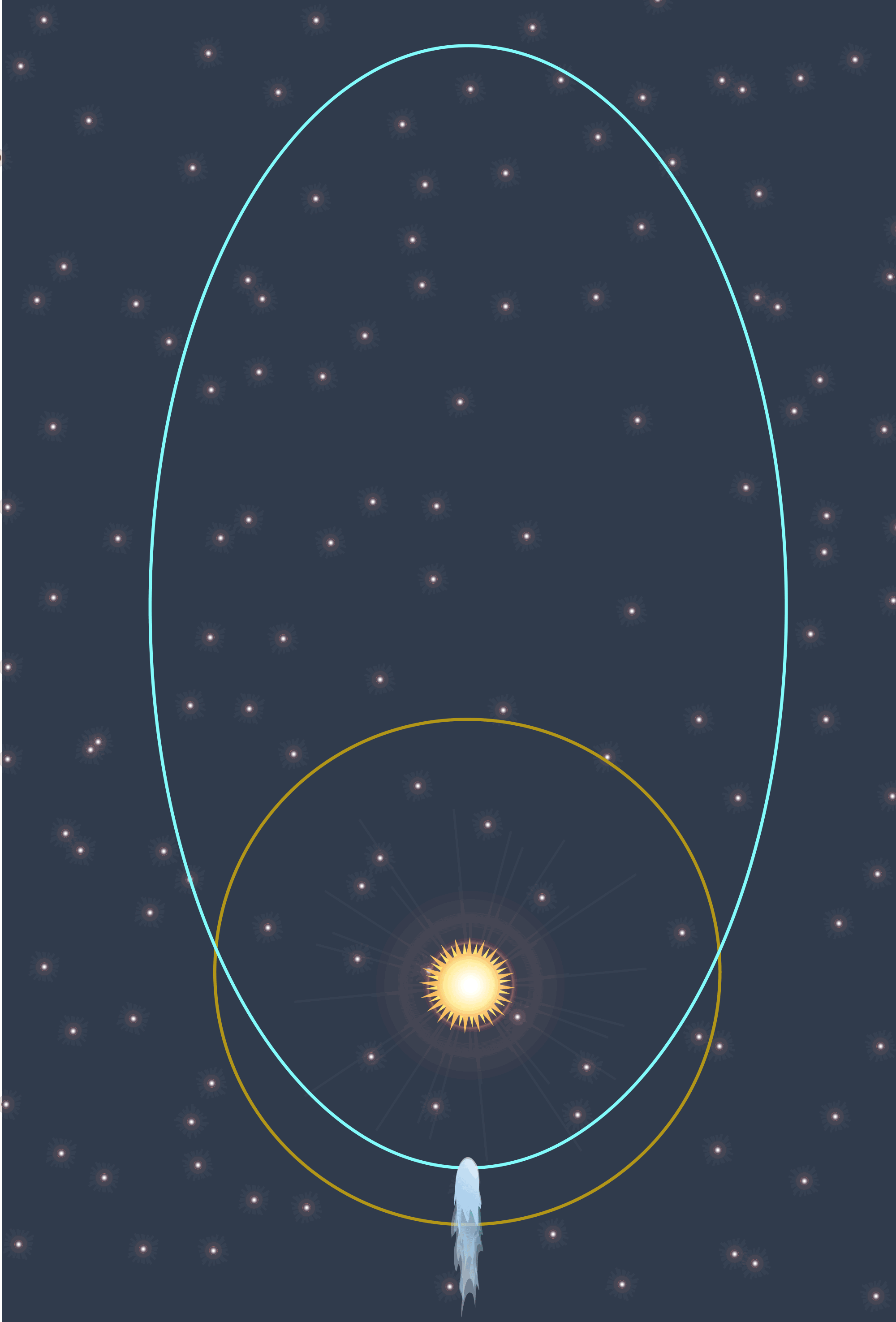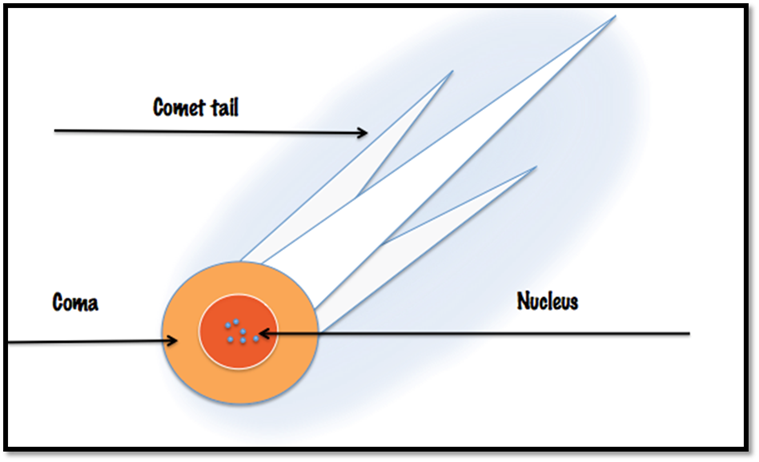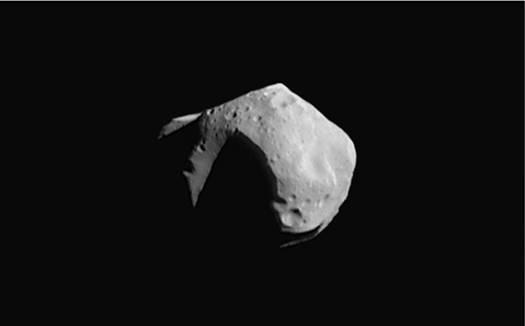Comets,
Asteroids, and Meteoroids

Learning
Objectives
By the end of this unit, you will be able to
explain the characteristics of comets, asteroids, and meteoroids, including
their composition, orbits, and their impact on Earth.
Comets
Comets are made of frozen
rock, dust, and gases. Like asteroids, comets are made of the leftovers after
planets of the solar system are formed.
Comets orbit the Sun, as asteroids do.
Click here to watch a video on comets.
Comets can sometimes get so close to the Sun
that they become hotter and bigger—even the size of a planet. When that
happens, the comet has a "tail" of dust and gas up to
tens of thousands of miles long.
Some comets do not survive when they get close
to the Sun, and they fall apart into the Sun.

Scientists believe that comets may have brought
materials needed to help life get started back when Earth first formed.
Comets do not crash into Earth as often as
asteroids, but scientists still want to know if a comet might hit Earth.
There are two places in our solar system
where comets are formed:
- The
Kuiper Belt is around Neptune. It has the shape of a disk.
- The
Oort Cloud is around our solar system.
Comets Have Three Parts
1.
Nucleus - the solid core of the comet
2.
Coma - the outer layer of dust and gas around the comet
3.
Tail - as a comet orbits past the Sun, the solar winds
from the Sun push the gas (bluish color) and dust (white) from the comet away,
forming the comet's tail. A comet's tail is its most distinctive feature. As it
approaches the Sun, it develops an enormous tail of luminous material that
extends millions of kilometers away from the Sun. When far from the Sun, a
comet's nucleus is very cold, and its material is frozen.

Asteroids
Asteroids are rocky and made of
metals. Like Earth, asteroids orbit the Sun. But they are much smaller than
planets and have a rockier surface.

Asteroids are made of materials left over when
other objects in the solar system are formed.
Asteroids have gravity but no atmosphere. Some
asteroids have small moons. The asteroid Ida,
which is 19 miles across, has a moon called Dactyl,
one mile wide.
Click here to watch a video of the Asteroid Belt.
A ring of asteroids, called the Asteroid
Belt, can be seen in the sky between Mars and Jupiter.

Scientists study the orbits of asteroids to
predict if they will crash into Earth. When an asteroid is located in space,
scientists track where it goes over time. It is possible to tell if an asteroid
moved from one place to another, but nobody knows how it got there. Many orbits
are possible. Even after watching an asteroid for a full orbit around the Sun,
scientists cannot say where it will go. The gravity of nearby objects and
unexpected collisions could change its course.
Meteoroids
Have you ever seen a shooting star at night?
Shooting stars are not stars. They start as meteoroids made of space debris, rock, iron, and/or nickel.
When asteroids hit planets, the pieces that
result are called meteors.
Click here to watch a video on Meteoroids, Meteors, and
Meteorites.
Meteors are meteoroids that hit the atmosphere
of a planet. Meteors are called meteorites when they hit a planet's surface.
Because they are made of metal, meteoroids work
like magnets.
Scientists study meteorites to learn more about
how the universe formed and what makes up Earth.
